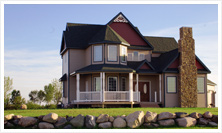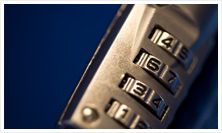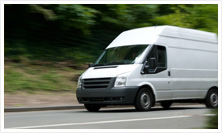Access Control: Different Lock Types and Their Benefits
Have you ever heard of access control locks? Even if you haven’t, chances are, you have likely seen or even utilized them at some point. Access control locks are quickly becoming the most popular lock choice for businesses everywhere. These locks are electronically operated, come with a wide variety of security features, and are generally considered to keep buildings better protected compared to traditional locks. If you are curious to learn more about access control and the benefits of installing these locking systems, read on!
Who Benefits Most from Access Control Locks?
Businesses, commercial buildings, and other public spaces can all benefit from access control locks of some kind. Depending on the type of access control locks installed, you can enjoy a wide variety of security features that are absent in traditional locks. With electronic locks, keyless entry locks, and other forms of access control, businesses can heighten their security, protect their employees, and establish better safety practices like never before. Learn about the different types of access control locks described below!
Types of Access Control Locks
There are several different types of access control locks. Depending on your budget, business needs, and preferences, there is no doubt you can find an access control lock system that will increase your building security and improve everyone’s safety.
- Stand-Alone Electronic Locks
Stand-alone access control lock models do not connect to any external systems. They most often use a keypad device to allow users access. They are best for singular rooms or entrances on small business buildings. You may have noticed them in restaurants or in certain office spaces. If you are looking to install a keyless entry lock of some kind but want to save on cost, a stand-alone lock is a great option. You can benefit from the added security of an electronic lock without all the extra bells and whistles.
- Connected Keypad Devices
A connected access control system will allow business owners to monitor door locking activity from an external device. These types of access control lock systems may also run on a keypad device, but owners can view activity in and around the door lock from an external monitoring system. For example, each employee may be given a different access code. That way, an employer can see when a certain employee enters an area of the building or enters to start their workday. These systems are great for accurate payroll tracking, enhanced security, and businesses that have a fair number of departments or employees to manage.
- Proximity Card Readers
Proximity card readers work much in the same way that other externally monitored access control devices do. The difference is, they use access cards instead of number combination as keys. Some businesses may prefer giving their employees individual access cards, especially if they are already required to carry employee ID with them at all times. Sometimes, employee ID’s can be combined with these access cards which makes it easy for employees to both get around the building and identify themselves when need be.
Some of the most common businesses that use proximity card readers are hospitals and clinics. Nurses, doctors, and other hospital staff members often need to move quickly through given areas of a building or certain corridor, such as an emergency room. Instead of taking the time to punch in an access code as one might with a keypad device, employees can hold their cards up to a reader pad on the wall and quickly and easily gain access to where they need to go.
- Biometric Readers
The most expensive, yet most secure type of access control locks are known as biometric readers. Instead of access cards or number codes, these devices require that users display specific bodily identifiers to unlock a certain door. Fingerprint readers are the most common and employees much use an assigned fingerprint or thumbprint to gain access to a certain building or space.
Another type of biometric lock is known as a retina scanner which uses the iris of one’s eye to identify authorized users. These high-tech devices are not necessary for most businesses to secure their buildings properly, but they may be required for certain spaces. Depending on the nature of one’s work, the sensitivity of the information inside of a certain building, and even hazardous materials that may be handled, biometric readers can be a great way to secure certain businesses.
How to Install an Access Control System
Regardless of which access control system appeals to you the most, professional assistance will always be required for installation. Access control locks require specialized programming and set-up that should always be taken care of by an expert. It is highly unlikely that you will be able to install an access control system on your own, especially if you plan on implementing a building-wide system or multiple locks at once.
Contact a local locksmith in your area that has experience with installing access control locks. Most locksmiths are now trained to work with electronic locks of all kinds due to their increase in popularity in recent years. You will be glad you made the choice to switch to access control – just like countless other businesses across the nation!



